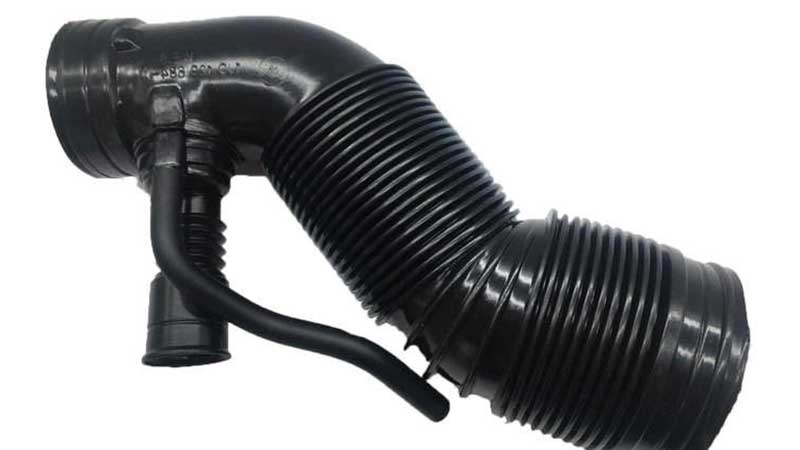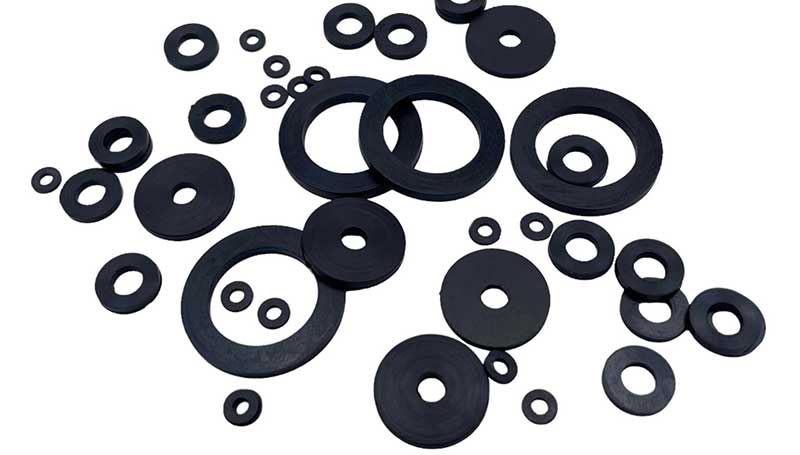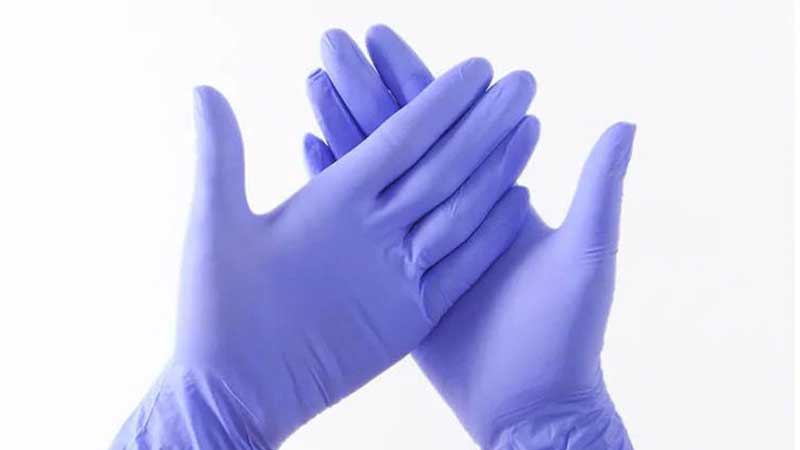Are you struggling to choose between silicone and TPE? Choosing between silicone and TPE can be tricky, as they both share some similar characteristics. In this article, we will dive into the details of both materials, highlighting their differences to help you make an informed choice.
What are silicone and TPE?
Silicone Definition
Silicone is a synthetic polymer made of silicon, oxygen, carbon, and hydrogen. The silicon-oxygen backbone gives it flexibility and stability. Silicone is soft and elastic, maintaining its properties over a wide range of temperatures. It comes in different forms, such as elastomers, resins, gels, and fluids. These forms are used in products like seals, gaskets, medical devices, and kitchenware.
TPE Definition
TPEs are a class of materials that combine thermoplastic and elastomeric properties, usually consisting of a blend or copolymer of plastic and rubber. The hard segments give it rigidity, while the soft segments provide flexibility, creating a balance of strength and flexibility. It can be processed into thermoplastic elastomers and is available in various hardness levels. TPE is used in products like automotive parts, footwear, and medical devices.
What are the differences in their properties?
| Property | Silicone | TPE |
| Softness and Flexibility | Excellent – Silicone is soft and flexible | Balanced – TPE offers a good combination of flexibility and strength |
| Temperature Resistance | Superior – Silicone can withstand extreme temperatures from -60°C to +300°C | Good – TPE performs well from -30°C to +100°C |
| Chemical Resistance | Excellent – Silicone resists a wide range of chemicals, including acids, bases, oils, and solvents | Good – TPE resists oils, greases, alcohols, weak acids, weak bases, and some solvents |
| Abrasion Resistance | Moderate – Silicone has moderate abrasion resistance and wears down with repeated friction in high-friction environments. | Excellent – TPE excels in abrasion resistance, with strong wear resistance |
Softness and Flexibility
Silicone
Silicone is known for its softness and flexibility. It It deforms without permanent damage. The Si-O bonds in its molecular structure give it flexibility and allow it to return to its original shape after stretching or compressing. Silicone can remain pliable in both low and high temperatures, maintaining its elasticity. This makes it suitable for products like seals, gaskets, and medical devices, where flexibility and comfort are essential. However, its softness also limits its durability in high-friction environments, as it is prone to wear over time.
TPE
TPE has a balance of softness and flexibility due to its structure of hard and soft segments. The soft segments allow TPE to bend and stretch without losing shape, and the hard segments add strength and wear resistance. This combination makes TPE ideal for applications that require both flexibility and strength. TPE keeps its flexibility in different conditions, offering durability in tough environments.
Temperature Resistance
Silicone
Silicone is renowned for its exceptional temperature resistance. The silicon-oxygen backbone allows it to perform reliably in both high and low temperatures. Silicone can typically withstand temperatures from -60°C to +230°C, and certain specialized grades can endure even higher temperatures, up to +300°C for short periods. This capability makes silicone ideal for applications in extreme environments, such as aerospace, automotive, and electrical insulation, where other materials will degrade or lose functionality.

TPE
TPE offers good temperature resistance, though it is generally less robust than silicone. It typically performs well in the range of -30°C to +100°C. Some formulations are able to withstand higher or lower temperatures. The material’s hard segments contribute to its high-temperature stability, while the soft segments provide flexibility at low temperatures. But it can lose toughness in extreme cold below its lower limit. When exposed to temperatures above its upper limit, TPE starts to soften, potentially losing its shape or structural integrity.

Chemical Resistance
Silicone
Silicone is highly valued for its excellent chemical resistance. Silicone can withstand exposure to a wide range of chemicals, including acids, bases, oils, and solvents, without swelling or degradation. Its long-term stability in such settings makes silicone ideal for environments with corrosive substances.
TPE
TPE offers good chemical resistance, but its performance is more limited than silicone. It is resistant to oils, greases, alcohols, weak acids, weak bases, and some solvents, making it suitable for use in industrial and automotive applications. TPE’s chemical resistance is still robust enough for many applications, such as flexible tubing, coatings, and footwear, where exposure to harsh chemicals is not frequent or prolonged.
Abrasion Resistance
Silicone
Silicone has moderate abrasion resistance compared to other elastomers. Its soft and flexible structure makes it prone to wear with repeated friction. The siloxane backbone provides flexibility and thermal stability, but it does not contribute significantly to mechanical strength. As a result, the surface of silicone can wear over time. Silicone performs well in applications with minimal friction, like seals, gaskets, and electrical insulation. However, in high-friction environments, its durability is limited.

TPE
TPE is known for its excellent abrasion resistance. The material combines hard and soft segments. This improves its toughness and wear resistance.The hard segments provide rigidity and strength, while the soft segments offer flexibility. This balance allows TPE to withstand mechanical stress, impact, and friction without significant damage. TPE is ideal for applications that experience constant wear, such as footwear outsoles, automotive parts, and industrial wheels. Its higher hardness and toughness make it far more durable than silicone in high-friction environments.

Are they biocompatible and safe?
Silicone
Silicone is widely recognized for its high biocompatibility and safety. It is an ideal material for medical and healthcare applications. It is non-toxic, non-reactive, and does not cause adverse reactions when in contact with human tissues, which is crucial for implants, catheters, and prosthetics. Silicone’s inert nature means it does not leach harmful substances into the body, and its resistance to microbial growth makes it suitable for long-term implantation. Besides, silicone is FDA-approved for many applications, such as baby products, bottles, and pacifiers.
TPE
TPE exhibits good biocompatibility, but it is not as universally accepted as silicone. It is non-toxic and skin-friendly, making it suitable for medical tubing, orthopedic devices, and protective coatings. Some types of TPE are approved for short-term contact with the body, but its biocompatibility can vary depending on the specific formulation. Due to its chemical composition, it may not always meet the same stringent medical standards required for long-term implantation, as silicone does. Nonetheless, TPE is generally considered safe for short-term, low-risk medical applications.
How are they manufactured?
Silicone Manufacturing Process
Silicone can be processed using various methods such as injection molding, compression molding, and extrusion. In general, the process involves heating the silicone material, forming it into the desired shape using molds, and then curing it to achieve its final properties. Often, post-curing is applied to enhance its mechanical performance. The process typically requires precise control of temperature and pressure to ensure optimal results. Thanks to the flexibility of silicone, it allows for the production of intricate designs.
TPE Manufacturing Process
TPE is primarily processed through injection molding, extrusion, and blow molding. The general process includes melting the TPE material, shaping it using molds or dies, and allowing it to cool and solidify. The material can be reprocessed, so it is easier to recycle and repurpose. Compared to silicone, TPE is easier to process and requires less energy, with relatively lower temperatures needed for molding.
What products will they be used for?
Silicone Applications
| Application Area | Description |
| Medical Applications | Catheters, implants, surgical gloves, wound dressings |
| Automotive Applications | Seals, gaskets, o-rings, thermal insulation |
| Consumer Products | Baking mats, spatulas, pacifiers, bottles |
| Electronics and Electrical Applications | Electrical insulation, gaskets, cable coatings |
- Medical Applications Silicone is widely used in the medical field due to its biocompatibility and flexibility. It is used in a variety of medical devices such as catheters, implants, wound dressings, and surgical gloves. Silicone’s non-toxicity and inertness make it ideal for long-term contact with human tissue, and it is often used for both internal and external medical applications. Besides, silicone’s resistance to bacteria and high temperatures make it a preferred material for sterilizable medical equipment.

- Automotive Applications In the automotive industry, silicone is used for seals, gaskets, and o-rings due to its ability to resist high temperatures, oils, and other chemicals. It is also used in thermal insulation for engines and other high-heat components. Silicone’s flexibility and durability make it essential for parts that require long-term reliability in extreme conditions.
- Consumer Products Silicone is commonly found in a wide range of consumer goods, such as kitchenware (baking mats, spatulas), baby products (pacifiers, bottles), and personal care products (silicone brushes, mats). Its softness, non-stick properties, and ability to resist high temperatures make it an ideal material for cooking utensils, while its safety and comfort make it suitable for baby products.
- Electronics and Electrical Applications Silicone is also used in electrical insulation, gaskets, and cable coatings due to its high dielectric strength, temperature stability, and resistance to electrical conductivity. It protects electronic components from heat, moisture, and contaminants, ensuring long-lasting performance.
TPE Applications
| Application Area | Description |
| Automotive Applications | Bumpers, seals, dashboards, floor mats |
| Footwear and Fashion | Soles, bags, watches, belts |
| Medical Applications | Medical tubing, catheters, prosthetics |
| Consumer Electronics | Phone cases, tablet covers, protective cases |
- Automotive Applications TPE is widely used in the automotive industry, such as bumpers, seals, dashboards, and floor mats. Its high flexibility, abrasion resistance, and ability to withstand wear and tear make it an ideal material for automotive components. TPE’s ability to be molded into various shapes also enables intricate designs for different automotive applications.

- Footwear and Fashion With abrasion resistance, flexibility, and durability, TPE is a popular choice for soles. It is also used in fashion accessories such as bags, watches, and belts, providing lightweight and strong materials.
- Medical Applications TPE is used in medical devices such as tubing, catheters, and bandages. Its biocompatibility, chemical resistance, and flexibility make it suitable for short-term contact with the body. Due to its ability to withstand repeated bending without cracking or breaking, TPE is also used in prosthetics and orthopedic devices.
- Consumer Electronics TPE is increasingly used in phone cases, tablet covers, and other protective cases for electronic devices. Its shock absorption, scratch resistance, and flexibility provide excellent protection against impacts and daily wear. TPE is also used in screen protectors due to its clarity and toughness.
Are their cost different?
Silicone Cost
Silicone is generally more expensive than many other elastomers due to its complex manufacturing process and specialized raw materials. The cost of silicone is influenced by factors such as its high-performance capabilities, custom formulations, and the need for precise processing to achieve its unique properties. Moreover, the curing process and post-curing steps involved in silicone production contribute to higher costs. Despite its higher price, the long-term durability and reliability of silicone in demanding applications often justify the investment. However, for less critical uses, the cost may be a limiting factor, especially in large-scale production.
TPE Cost
TPE is typically more affordable than silicone, so it is an attractive option for cost-sensitive applications. The production process for TPE is simpler and requires less energy than silicone, reducing its overall cost. TPE can be manufactured in large quantities and is versatile in various applications such as footwear, automotive parts, and consumer products. While TPE offers good performance and durability at a lower price, its cost can increase with specialized formulations for high-performance applications. Nonetheless, it remains a more budget-friendly alternative to silicone for many industries.
Conclusion
In conclusion, both silicone and TPE offer excellent properties, but their suitability depends on the specific needs of the application. Silicone is preferred for high-temperature environments and biocompatible products, while TPE excels in applications requiring abrasion resistance and flexibility.
When selecting high-quality silicone products, our company is committed to providing you with exceptional products and services. Our silicone products are renowned for their excellent softness, flexibility, and durability, making them widely used in various industries such as medical, automotive, and electronics. Whether you require customized solutions or standardized products, we can meet your needs. Please contact us anytime to learn more, and we’re here for any questions or orders. Let’s build a successful future together.